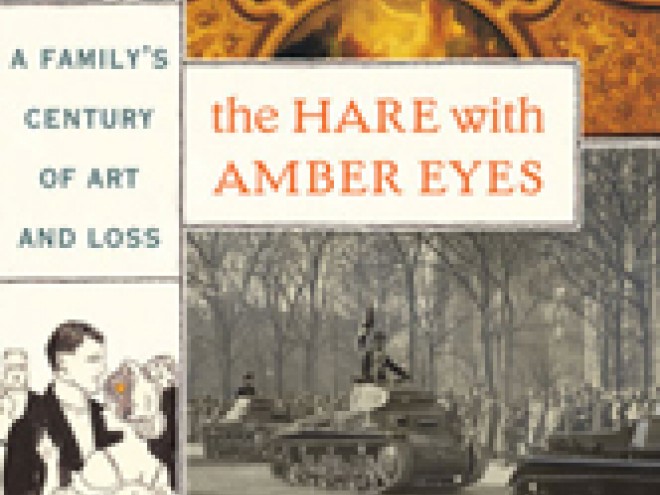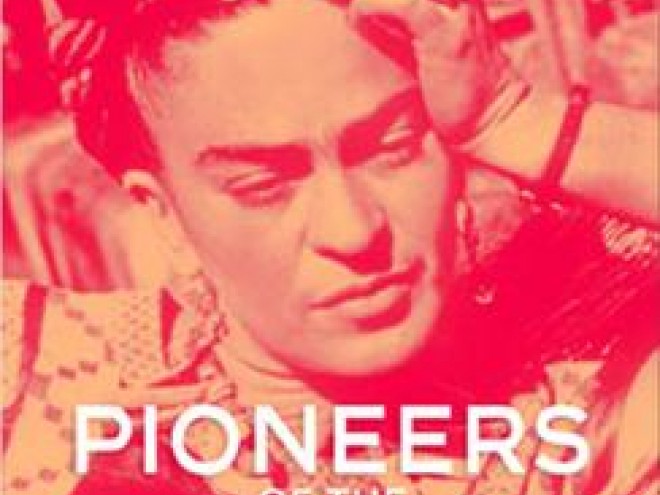Posted by Naomi Firestone-Teeter
Ever wonder about the story behind a book’s cover? Well, we do. All the time. So, we asked Racelle Rosett, and the team behind her beautiful cover for Moving Waters, Will Deutsch (the artist) and Charlotte Strick (the designer), a few questions about how their cover came to be:
 Racelle Rosett: I did a reading last spring of the title story from my collection Moving Waters at a launch party for Zeek (sponsored by LA Center for Jewish Culture and Creativity, the Jewish Artist Initiative, Jewlicious, and the Six Points Fellowship).
Racelle Rosett: I did a reading last spring of the title story from my collection Moving Waters at a launch party for Zeek (sponsored by LA Center for Jewish Culture and Creativity, the Jewish Artist Initiative, Jewlicious, and the Six Points Fellowship).
I met Will Deutsch there and had an immediate affinity for the work he was doing. Both of us were attending to the question of ancient Jewish ritual in modern Jewish life here in LA — I came to it as a writer and he came to it as a visual artist. Later we arranged to meet at the Farmer’s Market in Hollywood and he brought along his originals, over a hundred images, and I was really taken by them; I felt like there should be a set of them in every Rabbi’s study. This year Will was awarded the Six Points Fellowship for Emerging Jewish Artists and has been selected as the Artist in Residence for the Federation in Southern California. The mikvah image was so specific and correct for the collection. I loved that, as a reader, you felt like you were stepping into this pool, that you would soon be immersed in this world.
I have been a fan of Charlotte Strick’s work for many years. So often I would see a wonderful book cover and I would flip it over and see that it had been designed by Charlotte. This was the case recently with the cover Listen to This — I crossed the floor at B&N just to pick it up and look at it — the sign of a very good cover. It was a joy to have Charlotte bring her talent to this project. When we started this process she asked me which covers I liked best and I said “yours”. It was easy and a pleasure to entrust her with these decisions. I brought her Will’s image and she understood immediately how to enhance and support it.
Will Deutsch: I was inspired by Racelle’s treatment of her characters as they found themselves bumping into ritual in their day-to-day existence. In many ways this paralleled my own artistic practice and interests. It was in this intersection that  we became good friends and now artistic collaborators. Though this particular piece was done before Racelle and I ever met each other, it seems like it was made just for this book. And, in a way, I think it was.
we became good friends and now artistic collaborators. Though this particular piece was done before Racelle and I ever met each other, it seems like it was made just for this book. And, in a way, I think it was.
This image actually comes from a larger body of work collectively titled ‘Notes From the Tribe’. It’s a series of 124 illustrations depicting various Jewish traditions and experiences as well as characters from the Torah. The impetus for this art came from my experiences growing up in Orange County (where there are more strip malls than Jewish people). In my family alone there is a Conservative Cantor (my mother), an observant Orthodox Jew, an atheist and an agnostic; yet all of us identify strongly as Jews. So I took it upon myself to make paintings that encapsulate the essence of what it is that ties us all together. In regards to this specific image, I had never seen a depiction of a woman in this day and age bathing in the mikveh. Her back is turned to the viewer as this is her own private ritual.
I wanted the images I created to incorporate the Jewish cultural aesthetics that I had come to know and love but had not yet been brought together in any specific way. So I began with the object that is the genesis for all our stories, laws and traditions…the Torah. So each piece I make is done with a quill in black ink on a parchment like paper and in multiples of 62. However, a Torah is not supposed to contains pictures….which is a problem when that is what you are creating. So, I started to look at what is actually in a Torah-Hebraic calligraphy. My line work, especially in the faces, references various parts of the Hebrew letter broken down and reappropriated, from the okets (small protrusions which can be seen around the eyes to the gag (often the bodies of Hebrew letters which I use as cheek bones)) and even small taggin (crowns). One can see by the cover of this book that the process of drawing intricate lines in this manner helps to create what I feel is an intimate relation between the viewer and the subject. Both the form and content show reverence for that which inspired them.
Designer Charlotte Strick dives in further and answers a few of our questions about her process:
- Can you tell us anything interesting about the design process for this cover?
Lucky for me, Racelle came to this project with an illustration that not only made sense for her new collection of stories, but also which I could instantly see would make a strong cover image (with plenty of room for type).
- Do you have any previous drafts you could share?
I have been creating book jackets now for over a decade, and sometimes the designs are labored over and go through many rounds while others, like Moving Waters, just come together quickly. As soon as I saw Will’s illustration it was obvious where the type would sit. Racelle has a clean, modern aesthetic, and this type style paired well with her writing. The title type was designed to feel like it was being revealed to us in the ripples of the pool.
Note from Racelle: I loved Charlotte’s choice of the modern type style paired with the almost biblical imagery of the mikvah — the stories reside just at the place between ancient ritual and modern Jewish life so it felt just right to me.
- What are the top 3 favorite covers that you’ve designed?
This is a very hard question to answer! It’s like being asked who are your three favorite children (assuming you have a brood at home). A few recent favorites would have be Threats by Amelia Gray, All We Know: Three Lives by Lisa Cohen, and two plays by Denis Johnson Soul of a Whore and Purvis.
Editor’s Note: Charlotte Strick also designed the cover of another recent “Book Cover of the Week”: Network author Rich Cohen’s The Fish That Ate the Whale, as well as the following covers on the JBC site:
Read more about Racelle, Will, and Charlotte here.
Originally from Lancaster, Pennsylvania, Naomi is the CEO of Jewish Book Council. She graduated from Emory University with degrees in English and Art History and, in addition, studied at University College London. Prior to her role as executive director and now CEO, Naomi served as the founding editor of the JBC website and blog and managing editor of Jewish Book World. In addition, she has overseen JBC’s digital initiatives, and also developed the JBC’s Visiting Scribe series and Unpacking the Book: Jewish Writers in Conversation.







